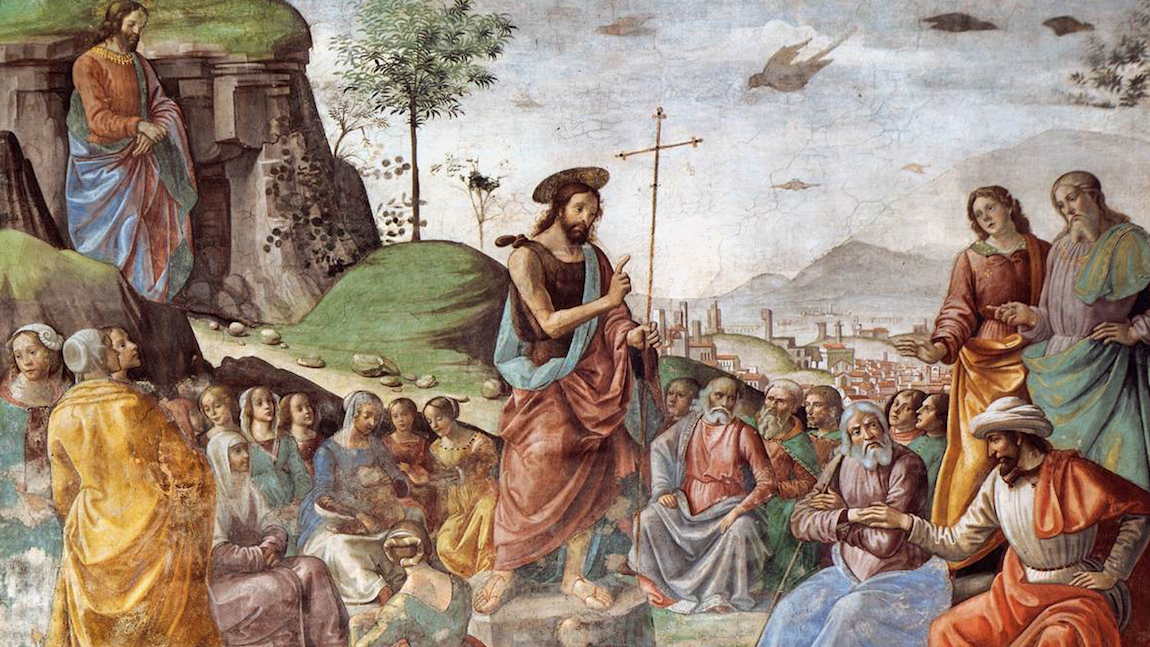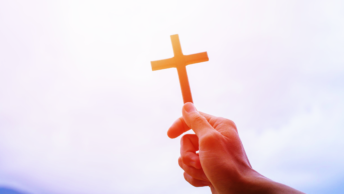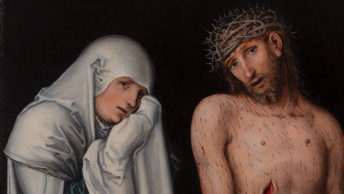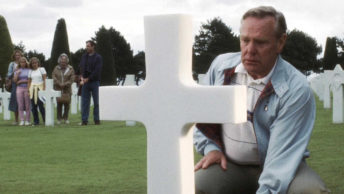Years ago, one of my seminary professors would begin each class by reading the first fourteen verses of St. John’s Gospel. On this Good Friday, I believe the final five verses may provide us with holy insight into today:
“The true light that enlightens every man was coming into the world. He was in the world, and the world was made through him, yet the world knew him not. He came to his own home, and his own people received him not. But to all who received him, who believed in his name, he gave power to become children of God; who were born, not of blood, nor of the will of the flesh, nor of the will of man, but of God. And the Word became flesh and dwelt among us, full of grace and truth; we have beheld his glory, glory as of the only Son from the Father.”
Shortly thereafter, the powerful figure of John the Baptist appears in the Gospel, points to Jesus, and proclaims: “Behold, the Lamb of God, who takes away the sins of the world.” (Jn 1:29) Suddenly, John disappears from the Gospel, for Jesus was now on the scene. To borrow a phrase from the great American poet, Wallace Stevens, Jesus was now in the public square.
Having now begun His public ministry, Jesus found Andrew and Philip and Peter and said to them: “Follow me.” (Jn1:43) And before long, many others followed Him and witnessed the many teachings and miracles. But in these final chapters from John’s Gospel that we have just reflected upon, Jesus is not only ridiculed, spat upon, and scourged; He is also condemned to death in a manner reserved for violent criminals.
And for what, I ask?
For speaking the truth…about God, love, and the way we should live our lives. All of this occurred in the open, in the middle of the public square. If we remember, He told us: “I am the way, and the truth, and the life” (Jn 14:6) and “Let not your hearts be troubled; believe in God, believe also in me.” (Jn 14:1) With a profound sense of the disciples’ angst, He reassures their faith while prophesying about the events of the Cross: “I will not leave you desolate; I will come to you. Yet a little while, and the world will see me no more, but you will see me; because I live, you will live also.” (Jn 14:18-19)
For a moment, if we can imagine ourselves transported back to that dark day at Calvary, we note that in quick order, events have unfolded. And with the deception, chaos, and death past us, all that is visible are three crosses with lifeless bodies affixed to them. On the middle cross hangs the Savior of the world. With Roman soldiers attending to loose ends, we see a few faithful women, one the Mother of Jesus. In tears, Mary looks upon her son, the innocent and spotless Lamb who has been slain, so that we may live.
Upon our return to this place and time, we hold our breath. Some of us would surely think: “That was then and this is now. I would never have participated in Jesus’ crucifixion, let alone abandoned Him.” But still, I wonder.
In our own day, do we not continue His crucifixion right out in the open, in the public square?
Sins against God. Sins against our neighbor. Sins against life itself. It is ironic that during Holy Week proceedings are being held in Washington by the highest court in our land that may lead to the very re-definition of marriage. But didn’t God say…”Therefore, a man leaves his father and his mother and cleaves to his wife, and they become one flesh? (Gen 2:24) And didn’t God inform us that…”He [God] created man in his own image, in the image of God he created them; male and female he created them” (Gen 1:27) And yet, thousands of unborn children perish each day in constitutionally-created death clinics. And didn’t Jesus say, “For I was hungry and you gave me no food, I was thirsty and you gave me no drink, I was a stranger and you did not welcome me, naked and you did not clothe me, sick and in prison and you did not visit me.” (Mt 25:42-43) Despite these penetrating words, can we honestly say that we really care about the poor?
Not long ago, in lamenting the rapid demise of godly values in our increasingly secularized society, Cardinal Francis George, the archbishop of Chicago, spoke these words regarding what will happen to bishops when they take a stand:
“I expect to die in bed, my successor will die in prison, and his successor will die a martyr in the public square. His successor will pick up the shards of a ruined society and slowly help rebuild civilization, as the Church has done so often in human history.”
Continuing, the cardinal noted that “Catholics, along with many others, believe that only one person has overcome and rescued history: Jesus Christ, Son of God and Son of the Virgin Mary, savior of the world and head of his body, the Church. Those who gather at His cross and by His empty tomb, no matter their nationality, are on the right side of history. Those who lie about Him and persecute or harass His followers in any age might imagine they are bringing something new to history, but they inevitably end up bringing the changes to the old human story of sin and oppression. There is nothing progressive about sin, even when it is promoted as enlightened.”
As we return to Calvary, our eyes are focused upon the massive cross on which hangs the Savior of the world. Jesus is broken and bruised and has given up his last breath. To the world, it appears that evil has prevailed in the public square. But then our eyes move downward and we find a woman being consoled by two others. As we walk toward her, our eyes meet hers. And with tears streaming down her cheeks, she pauses for a moment and says to us:
This is my son and God’s Son, who has died for you and me.
And for those who trust in God, the echo of John the Baptist’s famous words may still be heard: “Behold, the Lamb of God, who takes away the sins of the world.”








